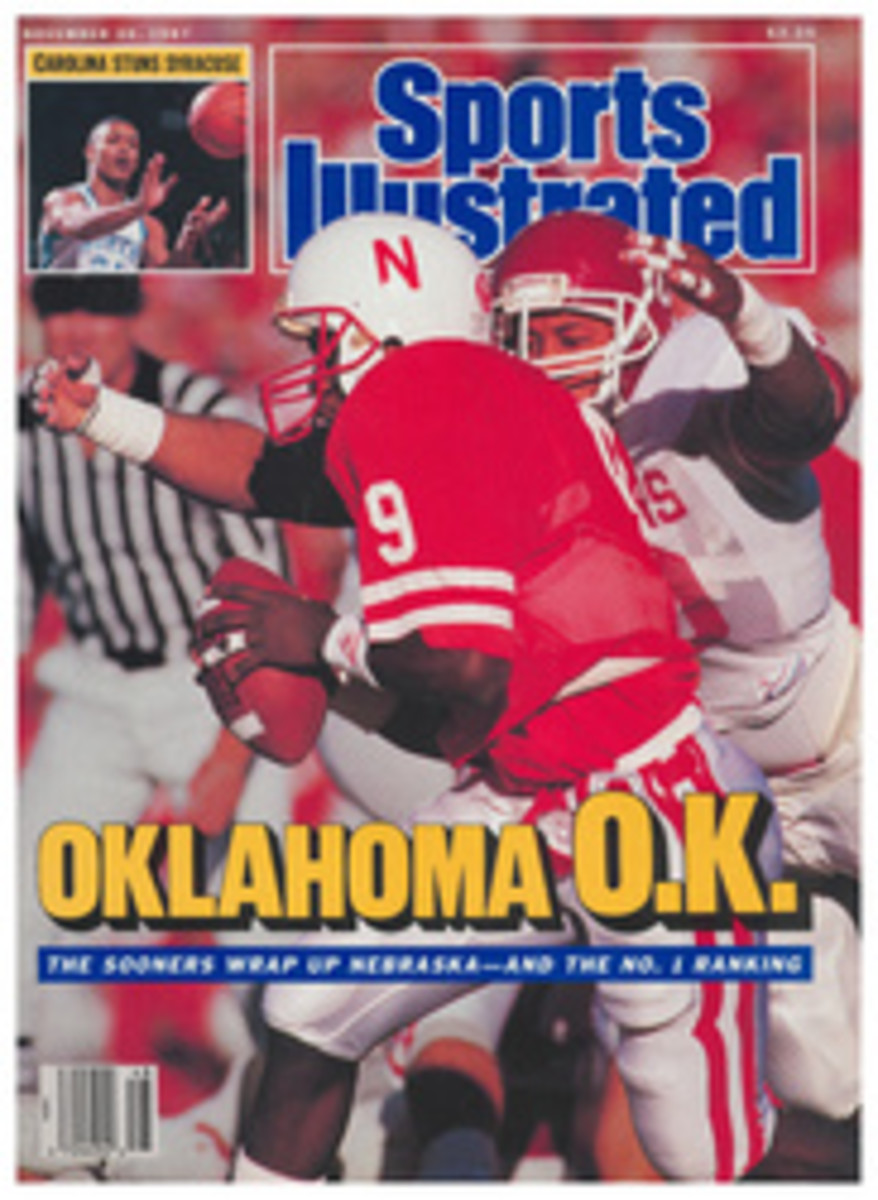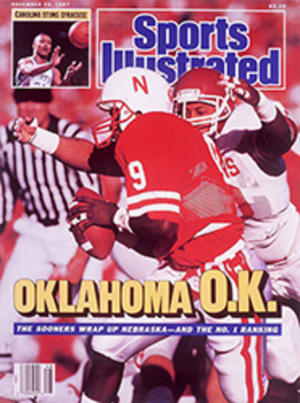
MORE FOOTBALL MADNESS
The news out of Columbus and Columbia seemed of a piece. In Columbus, Ohio State president Edward H. Jennings sacked football coach Earle Bruce, who, during his almost nine years in the post, had the best record (80-26-1) of any Big Ten coach but whose 5-4-1 this season was deemed not to be up to snuff at Woody Hayes's old school. At Columbia University it was revealed that in 1985 the school advised the Ivy League of its plans to admit some football players who did not meet the minimum academic guidelines that had been agreed upon by conference members in the early 1980s. Columbia, which has since brought in 11 players who otherwise might have been rejected, hoped this would improve the gridiron fortunes of the hapless Lions, who have lost an NCAA-record 41 straight games.
Why would a major football school fire a successful coach following a single subpar season? Why would a member of the Ivy League compromise its lofty academic standards in the interest of football respectability?
An obvious answer in both cases is money. Ohio State and Columbia were both acting at least partly in the belief that better results in football would brighten their balance sheets. The economic motive is especially strong at Ohio State, where millions of dollars in TV revenues, gate receipts and alumni donations are at stake when the Buckeyes take the field. Less overhead is involved in Ivy League football, mainly because budget-draining athletic scholarships aren't allowed in that esteemed conference. Still, football success is assumed to put benefactors in a more generous frame of mind in the Ivies, too. David Harrison, an officer of Columbia's annual fund drive, told The New York Times that students who call alumni during fund-raising phonathons find the sorry state of Lions football to be a common topic. A good football team, Harrison said, "does matter to fund-raising."
The risk in all this is that football will become something apart from, or will even undermine, the university's basic educational purpose. Columbia officals say this has not happened at their school. They point out that Columbia routinely relaxes its admission standards for some others—foreign students deficient in English, gifted musicians, minority students with outstanding personal qualities, alumni offspring and so on. But some Columbia students expressed indignation over the concessions to football players. Right or wrong, they apparently believed that the school is quicker to bend its standards for jocks than for others.
At Ohio State, the football tail is more clearly wagging the institutional dog. Jennings insisted that he fired Bruce not because of the Buckeyes' record but for sins he declined to specify. And, in fact, there were other knocks against Bruce. For example, he was not given to glad-handing alumni in the manner prescribed for coaches. But you can be sure that if the Buckeyes were, say, 10-1 and headed for the Rose Bowl, Bruce would still be their coach.
At the same time some of those who professed to be offended by Bruce's ouster were guilty of fanning the win-at-all-costs fire that brought about his dismissal. To wit:
•Many Ohio State partisans lamely complained about the timing of the Bruce firing—five days before the traditional season finale against Michigan (which the emotion-charged Buckeyes won 23-20)—even though they themselves had been calling for his scalp all season.
•Athletic director Rick Bay had often said that big-time athletics was "out of perspective," and he showed principle by quitting in protest of Jennings's action. But Bay himself hadn't provided any of the right perspective when, after ruling Buckeye wide receiver Cris Carter ineligible last summer for taking money from an agent, he joined Bruce in vindictively urging the NFL to stick fast to its rule against signing undergraduates, specifically Carter. Bay and Bruce were thus lending support to an exploitive arrangement that holds captive many football players who otherwise would have little interest in attending college.
•Bruce righteously objected to his dismissal (he has filed a $7.45 million lawsuit against Ohio State and Jennings), but he knew that the firing of coaches went with the territory in a profession that has rewarded him handsomely. His base salary was $87,120—Ohio State will eat the year left on his three-year contract—while TV and radio shows, a Nike contract, speeches and a summer camp brought his income to more than $400,000 a year.
That's $400,000 a year for a football coach. Do the benefits of football that accrue to colleges justify such excess, not to mention the altering of transcripts, the bending of admission standards and other dubious acts committed in pursuit of gridiron glory? When even Columbia stands accused of going overboard for football, one has to wonder.
PHOTO
MANNY MILLAN

